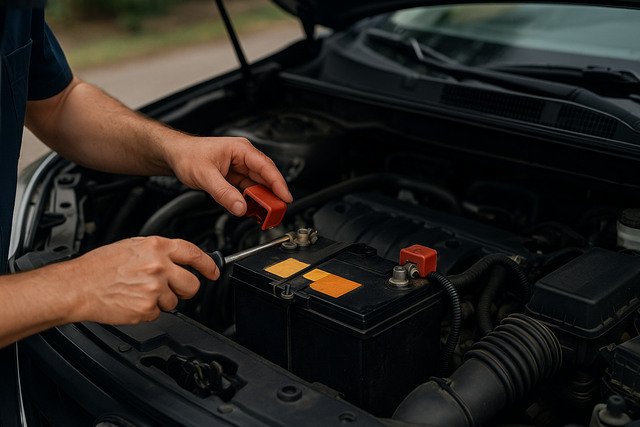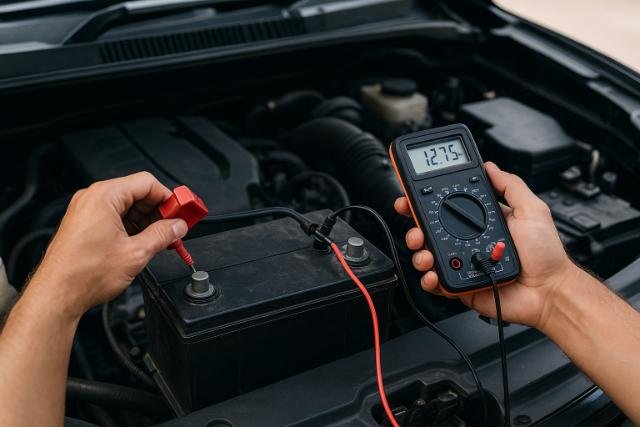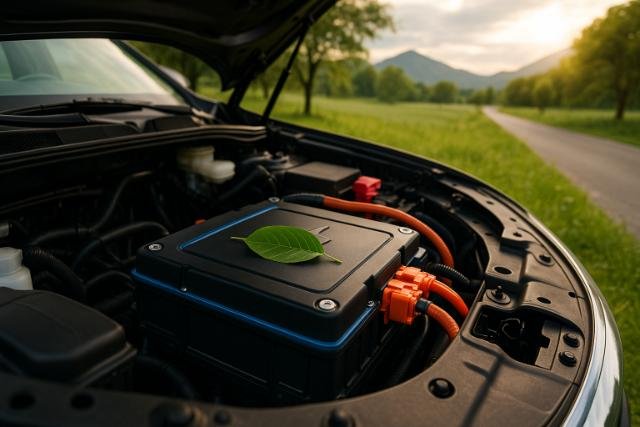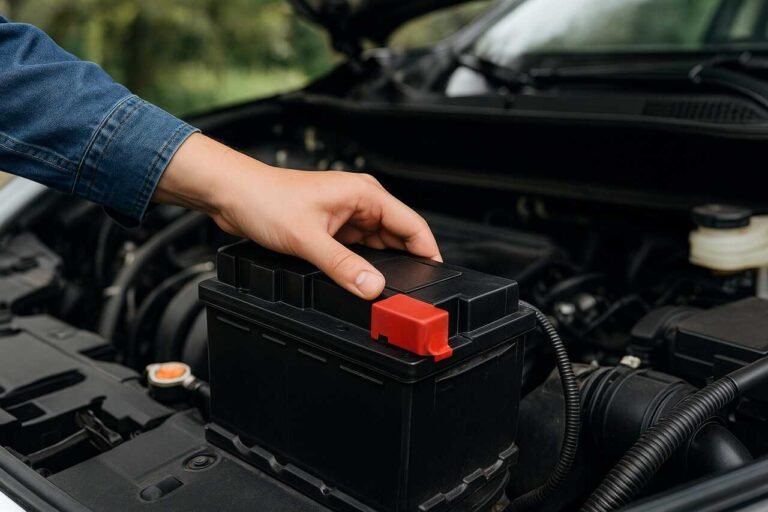Every car owner has faced the question at some point: how long should a car battery last? A car battery is the heart of your vehicle’s electrical system. It provides the necessary power to start the engine, operate lights, run onboard electronics, and support comfort features such as air conditioning and infotainment systems. Understanding the average lifespan of a car battery, the factors that influence it, and how to maintain it properly can prevent costly breakdowns and improve your vehicle’s reliability.
In this complete guide, we will explore every detail that affects battery performance, from environmental impact and charging habits to inspection routines and replacement timing. Whether you drive a compact car, SUV, or electric vehicle, this article provides all the insights needed to extend your battery life and maintain optimal performance year-round.
Identify the Average Lifespan of a Car Battery
A car battery’s life expectancy depends on multiple conditions, but the general rule is that most car batteries last between three to five years. This time frame can vary depending on the brand, manufacturing quality, climate, and how often the vehicle is driven. After three years, most batteries begin to lose their ability to hold a full charge, which can lead to sluggish starts or sudden failures.
Understand Battery Chemistry and Lifespan Variations
The chemistry inside a battery determines how long it lasts and how it performs under different conditions. Traditional lead-acid batteries are still the most common type used in cars today. They are affordable and reliable but typically last around three to five years. Absorbent Glass Mat (AGM) batteries, on the other hand, are more advanced. They resist vibration and can handle deep discharges better than conventional batteries, often lasting four to six years. Lithium-ion batteries, mostly found in hybrid and electric vehicles, offer even longer lifespans, frequently reaching eight to ten years when properly maintained.
Compare Climate Impact on Battery Longevity
Temperature plays an important role in battery durability. In hot climates, such as in southern states, heat causes the electrolyte inside the battery to evaporate faster, which can lead to internal damage and shorter life. In contrast, batteries in cold climates experience slower chemical reactions, making it harder to generate enough power to start the engine. A car battery that might last five years in a cooler area may only last two or three years in extreme heat. Drivers can extend battery life by parking in shaded areas or garages and using thermal insulation if needed.
| Battery Type | Average Lifespan | Ideal Climate | Maintenance Level |
| Lead-Acid | 3 to 5 years | Moderate | Regular electrolyte check |
| AGM | 4 to 6 years | All climates | Minimal maintenance |
| Lithium-Ion | 8 to 10 years | Mild | Low maintenance |
Assess Factors That Influence Battery Lifespan
Several factors influence how long a car battery lasts. These include how often you drive, how far you drive, environmental conditions, and the electrical load placed on the battery. Recognizing these factors can help you make adjustments that increase battery longevity.
Evaluate Driving Habits and Frequency
Short trips put significant strain on the battery. When you start your car, the battery delivers a large amount of power to turn over the engine. Once the engine is running, the alternator recharges the battery. However, if your trips are shorter than 15 minutes, the alternator does not have enough time to fully recharge it. Over time, this leads to a partial charge cycle and sulfation buildup on the battery plates, which reduces overall capacity. Regular longer drives help the alternator replenish the battery fully, maintaining its health.
Examine Electrical Load and Accessory Usage
Modern cars have more electrical components than ever before. Features like seat warmers, GPS systems, LED lights, and entertainment screens all draw power from the battery. Even when the engine is off, accessories like dash cameras or USB chargers can continue to drain power. Keeping accessories unplugged when the car is not running and avoiding unnecessary electrical usage can significantly extend battery life. If you frequently use high-demand accessories, consider a higher-capacity battery with a greater reserve capacity rating.
Perform Regular Battery Inspections

Routine inspection is one of the most effective ways to prevent sudden battery failure. A car battery can appear fine on the outside but still develop internal issues. By checking physical condition, voltage levels, and terminal cleanliness, you can catch problems before they cause trouble.
Check for Physical Damage and Corrosion
Inspect the top of the battery and the terminals regularly. Look for cracks, swelling, or fluid leaks, which are signs of overcharging or internal damage. Corrosion often appears as a white or bluish powdery substance around the terminals. This buildup interferes with the electrical connection and reduces charging efficiency. Cleaning the terminals with a mixture of baking soda and water and applying petroleum jelly afterward helps prevent future corrosion. Also, ensure that the battery cables are tightly secured and free from wear.
Monitor Battery Voltage and State of Charge
Testing the voltage gives you a direct understanding of your battery’s condition. Use a digital multimeter to measure the resting voltage. A fully charged 12-volt battery should read between 12.6 and 12.8 volts. If the reading is between 12.4 and 12.5 volts, it indicates a partial charge, while anything below 12.2 volts means the battery is weak or discharged. Low voltage may result from poor charging, parasitic drains, or internal sulfation. Regular voltage checks can help you detect declining performance early and prevent getting stranded with a dead battery.
| Voltage Level | Condition | Recommended Action |
| 12.6V – 12.8V | Fully Charged | No action needed |
| 12.4V – 12.5V | Partial Charge | Recharge soon |
| Below 12.2V | Weak or Dead | Test or Replace |
Optimize Maintenance Practices for Longer Battery Life

Maintaining a car battery is simple but requires consistency. Even minor negligence can drastically reduce battery life. Regular care helps ensure that your battery delivers stable power for years.
Maintain Proper Electrolyte Levels
In traditional lead-acid batteries, the electrolyte level determines how well the battery can store and deliver energy. If the liquid level drops too low, parts of the lead plates become exposed, causing permanent damage.
Check electrolyte levels monthly and refill with distilled water if needed. Never use tap water because it contains minerals that can react with the chemicals inside the battery. Keeping proper fluid balance ensures that chemical reactions occur evenly across all cells, improving performance and lifespan.
Keep Battery Clean and Securely Mounted
Dirt, oil, and debris on the surface of a battery can cause slow electrical discharge. Wipe the battery casing regularly to keep it clean. Ensure that the battery is securely mounted in its tray since excessive vibrations can loosen connections and crack internal plates. This issue is particularly common in off-road vehicles and trucks that experience rough driving conditions. A secure, clean battery performs more efficiently and resists premature wear.
Manage Environmental Conditions to Protect Battery Health

Weather and storage conditions are among the biggest influences on how long a car battery lasts. Proper temperature management can make the difference between a battery lasting two years or five.
Shield Batteries from Excessive Heat
Excessive heat accelerates chemical reactions within the battery, which may sound beneficial but actually causes internal degradation. The fluid inside evaporates faster, reducing the ability of the battery to hold a charge. Whenever possible, park in a shaded area, use a windshield sunshade, or park in a garage to limit direct exposure. During very hot summers, checking the battery more frequently can prevent surprises.
Prevent Deep Discharge During Cold Seasons
Cold weather presents the opposite problem. When the temperature drops, the chemical activity inside the battery slows down, reducing available cranking power. A battery that performs well in summer may struggle to start the engine in winter. To combat this, consider using a battery maintainer or trickle charger, especially if the vehicle sits idle for long periods. This tool keeps the battery at an optimal charge level without overcharging, preventing deep discharges that damage the cells.
Detect Warning Signs of Battery Failure
Recognizing early warning signs can save you from being stranded with a dead battery. Batteries rarely fail suddenly; they usually show clear symptoms before complete breakdown.
Look for Slow Engine Cranking
If you notice that your engine takes longer to start or makes a sluggish cranking sound, this is often a sign of a weak battery. Over time, the chemical reactions slow down due to sulfation or internal corrosion. These issues reduce the battery’s ability to deliver the necessary power to start the engine quickly. Ignoring slow starts can eventually lead to complete failure, so it is best to test or replace the battery when these symptoms appear.
Observe Electrical Malfunctions
Electrical problems such as dimming headlights, flickering dashboard lights, or malfunctioning power windows can signal voltage instability. When the battery cannot provide consistent voltage, electronic components start to behave unpredictably. These warning signs should not be ignored. Conducting a professional load test can confirm whether the issue lies in the battery, alternator, or wiring system.
Replace the Battery at the Right Time
Even the best-maintained battery will eventually wear out. Replacing it at the right time is essential for maintaining your vehicle’s reliability and preventing electrical issues.
Determine Ideal Replacement Intervals
A good rule of thumb is to replace your car battery every three to five years. Some may last longer, but once a battery reaches this age range, it becomes less efficient at holding a charge. Modern vehicles rely heavily on stable voltage for advanced electronics such as sensors and computers. An aging battery can cause erratic behavior in these systems, including false dashboard warnings or poor engine performance. Replacing before total failure ensures your car continues to operate smoothly.
Choose the Right Battery Type and Specifications
When replacing a battery, it’s important to match the new one to your vehicle’s specifications. Two key ratings to check are Cold Cranking Amps (CCA) and Reserve Capacity (RC). CCA measures the battery’s ability to start the engine in cold weather, while RC indicates how long the battery can run essential electronics if the alternator fails. Choosing a battery with slightly higher ratings than the minimum requirement can provide a safety margin for harsh conditions.
| Vehicle Category | Recommended CCA | Recommended Reserve Capacity |
| Compact Cars | 400 to 500 CCA | 70 to 90 minutes |
| SUVs and Trucks | 600 to 800 CCA | 100 to 120 minutes |
| Luxury Vehicles | 700 to 900 CCA | 120 to 150 minutes |
Conclusion
Understanding how long a car battery should last is not just about knowing a number; it’s about managing the many factors that influence it. On average, a car battery lasts between three and five years, but regular inspections, careful driving habits, and attention to environmental conditions can extend that significantly. By maintaining proper electrolyte levels, avoiding short trips, and keeping your battery clean and charged, you ensure consistent performance and fewer unexpected failures. A healthy battery means a reliable vehicle, smoother starts, and long-term cost savings.
Explore more insightful and valuable content on our blog journalingtechniques! Stay updated with helpful tips, expert advice, and in-depth articles that enhance your knowledge.
FAQ’s
Yes, a well-maintained AGM or lithium-ion battery can last up to eight years or longer, especially in moderate climates with consistent maintenance.
Frequent short trips, extreme temperatures, corrosion, and leaving accessories on while the engine is off are the most common causes of early battery failure.
Slow starts, dimming lights, and a battery warning light on your dashboard indicate that your battery may be losing power and needs testing or replacement.
If your car will not be used for more than a few weeks, disconnect the battery or use a battery maintainer to prevent discharge and preserve battery health.
Occasional jump-starts are harmless, but frequent use indicates a deeper issue such as a failing alternator or old battery. Continuous deep discharge and recharge cycles shorten lifespan.
Hybrid and electric vehicles use lithium-ion or nickel-metal hydride batteries that typically last between eight and ten years, though this can vary based on usage and climate.

